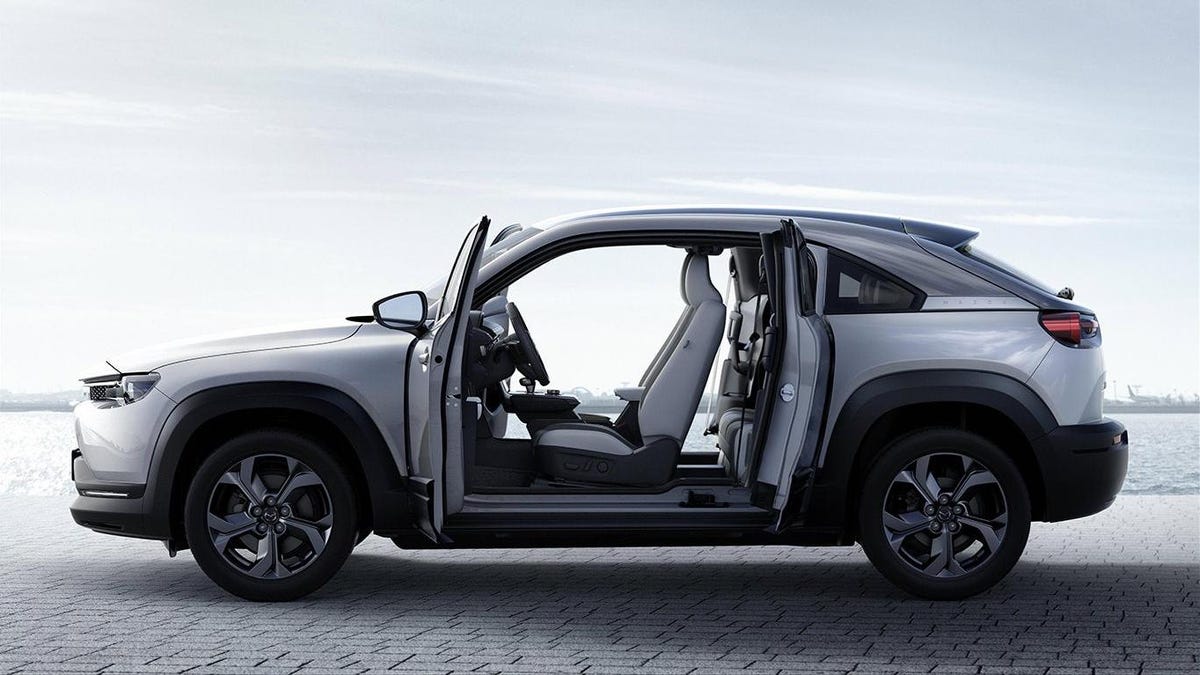We May Have Seen the Last of the Mazda MX-30 EV

Image: Mazda
At this rate, the Mazda MX-30 could very well go down as the next unlikely breadwinner on Bring a Trailer. The Japanese automaker has reportedly sold 505 examples of its first battery-electric vehicle — and that’s all it was scheduled to build. Without murmurs of 2023 models rolling into showrooms, it’s quite possible we’ve seen the last of the 100-mile crossover, at least until the long-rumored plug-in hybrid model enters the frame.
Top Gear America Sneak Peek
Mazda confirmed to Electrek that it sold through its entire stock of MX-30s, which were only ever sold in California. As underwhelming as that sounds, it’s even bleaker when you consider the manufacturer originally intended to build 550 cars — not 505 — but fell short of even that due to supply chain constraints. All of eight people took home new MX-30s in July. From the article:
Since [Electrek] first heard the model was officially sold out, we’ve been trying to get comment from Mazda about it. Mazda confirmed with us that a total of 505 MX-30s were sold and that the model is now completely sold out. It declined to comment on whether 2023 cars are coming to dealerships or if the MX-30 is sold out in other territories too.
We were able to find some MX-30s for sale in Europe, but we don’t know if more stock is coming or if the European market has also reached the end of the line.
Given that MX-30 sales started last year in October, that means we’ve got one to two months before the 2023 cars would come to dealerships if they were in the plan, which suggests to us that they are not.
Jalopnik has reached out to Mazda to corroborate this reporting, and will update this story with whatever we learn.
The MX-30 clearly wasn’t given the full weight of Mazda’s marketing muscle. When representatives of the company did bring it up in conversation, they usually relied on flimsy arguments to justify its existence, like the claim that it was really intended as more of a second vehicle. It was obviously doomed from the start.
Whether the MX-30 was a thinly-veiled compliance car or someone at Mazda earnestly saw potential in it, the company remains on the back foot with respect to electrification. Its next attempt has to be more broadly relevant to buyers’ needs and wants.



